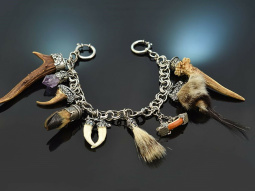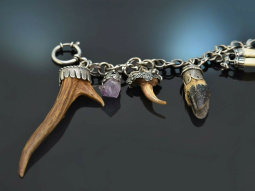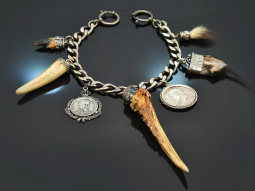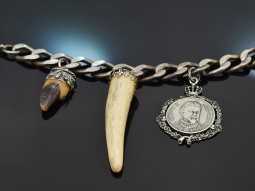Charivari & Pendants
The most popular men's accessory for traditional costumes is and remains the Charivari! It is worn at the front of the fly of lederhosen and originally developed from a type of watch chain. The charivari has its roots in the 19th century and is particularly widespread in the Bavarian and Austrian Alpine regions. Find out more »
What is a Charivari?
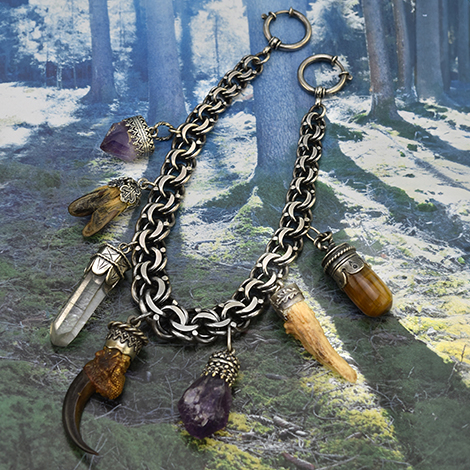
A charivari is a sturdy chain with numerous pendants that is attached to the lederhose with two clasps (often spring clasps) on the sides. It was traditionally worn with festive costumes, not with dirndls and lederhosen, which, unlike today, were considered work clothes.
However, the charivari was not only decorative, it also served as an expression of identity and belonging to a particular region or community for the men of yesteryear. The representation of one's own (prosperous) status was certainly a priority.
Women can also wear charivaris. They are usually somewhat more delicate and are attached to the waistband of the dirndl apron with two hooks. The smaller counterpart to the women's charivari is the skirt pin, which is attached to the traditional costume in the same way.
The charivaris‘ pendants
The catchy name of the charivari comes from the French and means something like "noise", alluding to the loud noises that the pendants of the jewellery chain make with every movement.
The pendants were by no means chosen at random: In the past, they served as talismans and souvenirs, or as proof of a successful hunt. The rule was: the more pendants a piece of jewellery had and the more opulent it was, the wealthier its owner was.
Even today, charivari pendants can be divided into different categories:
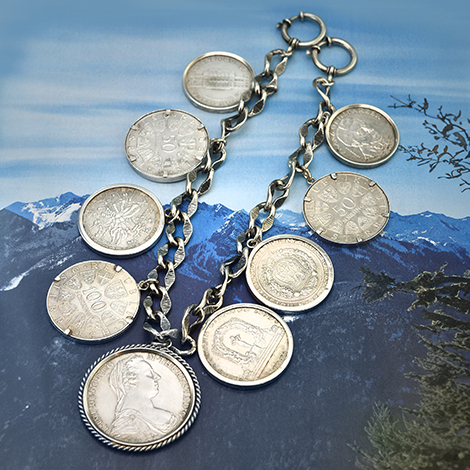
-
Silver pendants: These are often artistically designed and depict three-dimensional motifs such as animals, plants or traditional symbols. The latter can include pilgrimage souvenirs, seals or pendants with the wearer's occupational symbols. Frivolous motifs are also often seen on charivaris.
-
Hunting trophies: As a souvenir or lucky charm for a successful hunt, charivaris are usually decorated with hunting trophies. These include for example bird claws and feathers, fox hooks, hare paws, deer toes and hooves.
-
Wood and horn pendants: These pendants are often hand-carved and reflect the natural connection of traditional dress. They come in various shapes and sizes and are often decorated with traditional patterns.
-
Gemstone pendants: This is where colour and sparkle come into play. However, as gemstones are also said to have healing or protective powers, these pendants are usually regarded as lucky charms.
-
Coins and medals often feature motifs relating to regional personalities (Franz Joseph Strauss, King Ludwig II., Empress Maria Theresa, etc.), religious content (the Virgin Mary as Patrona Bavariae) or serve as emblems for specific anniversaries (e.g. city anniversaries).
The Charivari is therefore not only a classic piece of traditional costume jewellery, but also a piece of living tradition that reflects the history and culture of a region. Even in modern times, it is a symbol of pride and identity that can be passed down from generation to generation.
